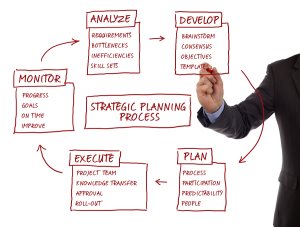5 Tips for Successful Change Management

Here are five tips to help you navigate and manage change:
1. Develop a common “change” language and tools
When everyone knows the process for how change is communicated and implemented in your organization, they won’t see change as so disruptive. People want to know what’s being changed, how it impacts them, what they need to do, what to expect overall, and who to turn to with questions. By using a common change language and process across the organization (such as Six Sigma), you reduce anxiety and make change more “normal.”
2. Be aware of the ripple effect
Organizations operate as multi-layered, interwoven systems. One small change ripples out and impacts something entirely different. Look out across the organization; then look out even farther. Ask for people’s input and understand how change is going to affect processes and the way things are done. Risk management and change management go hand in hand, so be sure to understand the full impact as deeply as possible.
3. Emphasize your company values
Frame change in light of your company values. Remind people of your culture, your mission, and your values. Share the vision of how the change will benefit the company and employees. When change aligns with shared values, even difficult changes feel right. And that helps to garner a sense of purpose and community.
For example, if your company prioritizes growth and values excellence, moving from an internal to external talent acquisition system in order to accommodate the demands of opening new locations will feel right to employees. However, this will also mean people currently serving as internal recruiters will be out of their jobs or reassigned. The change will be seen as aligning with the priority of growth and as a further way to ensure excellence. The shared values bond people together as they understand it’s for the “good of the company.”
4. Communicate
You cannot over-communicate when it comes to change. Communicate in a variety of mediums to accommodate people’s different learning styles. Be repetitive and pay attention to the tone and manner you use to express the change. What do people need to know before you make the big announcement? What are they going to be afraid of? Be clear, simple, and answer questions up front to help people navigate the change. Point people to resources and have a central data location they can access if they need more info or to remind them of what they need to do.
5. Involve people in the solution
As an RPO firm, we make a point to include the people impacted by our presence in our onboarding. We ask the employees what they think and for their advice. We want to be a partner, not a competitor, and we certainly don’t want to come in and be seen as “taking over.” By including people who are most impacted by the change, you can help transition roles and responsibilities and leverage the wealth of knowledge and expertise they have.
Change is inevitable and constant. It’s a process and not an event. The easier and more “normal” you can make it, the smoother it will be. The more knowledge and understanding people have about the process, the less anxiety they will feel. Be mindful and thoughtful as you implement change and people will find it easier to embrace.

